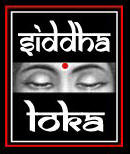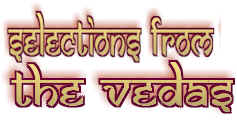|
|
The Vedas were revealed in the form of verses (Richas), prose passages (Yajus) and divine esoteric melodies (Samans). Over time, the sages arranged all these into 4 collections:
1. The Rigveda comprising almost entirely of verses (Richas).
2. The Yajurveda comprising largely of Yajus and not an insignificant number of Richas.
3. The Samaveda comprising of verses from Rigveda that were set to the melodies (Samans).
4. The Atharvaveda comprising of Richas and Yajus.
Some followers of Atharva Veda can chant even the text of Atharva Veda with the Samans, and therefore it is said that the Atharvaveda has all the three types of Vedic Mantras.
The collection of Vedas has been rearranged and re-collected several times, and the last person to do so was Krishna Dwaipayana Veda Vyasa. This final edition, according the the Hindu tradition, was done around 3200 B.C.E. From very early times, the divinely inspired sages started writing theological texts on these Vedas. These expalanatory texts are called 'Brahmanas" and expound the ritualistic and spiritual aspects of Vedas. The portions of Brahmanas that dwell primarily upon the spiritual aspects of Vedas are called Upanishads.
Some Upanishads are also stand alone Upanishads and might not have formed a part of any Brahmana texts. Therefore, Upanishads could be older than the data of last redaction of the Vedas viz. 3200 B.C.E. Examples of such very ancient Upanishads are Taittiriya and Aitreya. Upanishads composed after 3200 B.C.E. include the Maitrayaniya and so on. The Isavasya Upanishad however, is a part of the Yajurveda itself and so it is considered the eternal word of God.
The Upanishdas themselves are the Vision of several Sages and are anonymous works, by and large. They represent the teachings of these Sages probably collected by their disciples.



